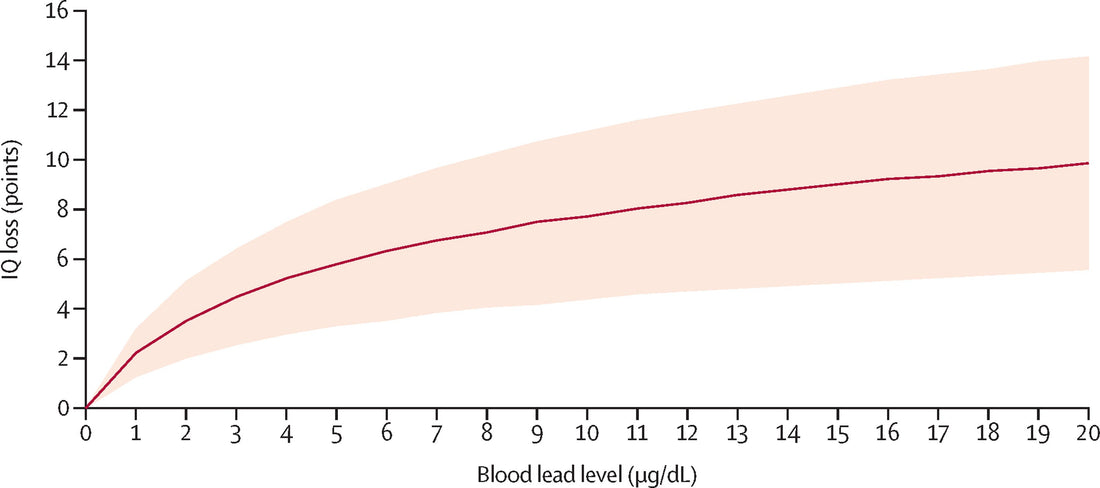
Understanding lead exposure statistics and harm
Share
Lead pollution and exposure statistics are incredibly difficult to make sense of. You may come across statistics like 'one in three children globally have lead poisoning' - what relevance does that have to you?
Let's narrow it down a bit. The average (mean) IQ loss among children due to lead exposure in the UK is estimated to be 2.6 IQ points. A couple of IQ points - what's the fuss, right?
No. This statistic does not tell us about the likelihood any given child will have significantly higher or lower exposures. It does indicate that a large proportion of children are suffering an IQ loss greater than 2.6 points though, which sounds a lot worse than saying the mean is 2.6. How many are losing 3, 4, 5, 10 points? The statistic does not reveal.
Common sense tells us that living conditions vary enormously. Some people live in new houses in the countryside with little to no lead exposure; others live on main roads in Victorian townhouses with multiple layers of lead paint. Some have hired ignorant contractors, others have not. It seems probable that a significant number of children could be suffering effects a lot larger than the mean.
Thankfully we have a few fairly solid statistics to fall back on when trying to work out the true impact of lead. One is the so-called 'reference level' in the US, where most children are tested for blood lead levels on a routine basis. The reference level is the level that defines the top 2.5% of exposure levels (i.e. your child has a 2.5% chance of having the reference level or above). In the US the reference level was 5 mcg/dL a few years ago; it's now down to 3.5 thanks to regulation having an impact. No such figure is obtainable for the UK, where there is no effective regulation or surveillance (estimates that one can find are largely based on modelling). It is likely to be around 5 though.
Exposure levels do not tell us actual harm. Studies differ, but estimates of impact to IQ hover around loss of 1 IQ point per 1 mcg/dL increased exposure for the first 6 mg/dL. So 5 mcg/dL would equal roughly 5 IQ points lost. Again though, sources of these statistics rarely give us the distribution. It is likely to be quite wide as a single exposure level measurement does not tell us things like how long the exposure lasted, whether there was a single acute exposure or long term low-level exposure, age of the child when first exposed, etc.
Take a look at the pink band in the chart above from probably the most helpful study I've found. That pink band represents the 95% confidence interval for predicted IQ loss. It shows us that with a BLL of 5 mcg/dL, there is 95% confidence that IQ loss will be between 3 and 8 points, with the mean just over 5.
Apart from IQ loss, a recent meta-study confirms there is an increased risk of ADHD at any level of exposure. Conservatively, there may be around a 10% increase in ADHD risk with every doubling of lead blood levels - equating to possibly around a 50% total increased risk at 5 mcg/dL. Some studies support more powerful effects.
So our perhaps relatively innocuous figure of mean IQ loss in the UK of 2-ish points translates into a strong likelihood than in any given class of 30 children in the UK, at least one has a fairly severe form of 'low-level' lead poisoning - with an IQ reduced around 5 points and an increased chance of ADHD. The IQ study points out this is only the IQ lost over the first 5 years of life - continued exposure after that is likely to further increase the damage.
Odds are that whatever exactly you want to know about lead, the research is only starting to be done. Instead you must work with the facts there are to estimate the risks inherent in your particular situation. One thing's for sure though: if you live in the UK the risk is probably higher than you thought.
